How an architect in Spain made one family’s dream of an island summer house come true
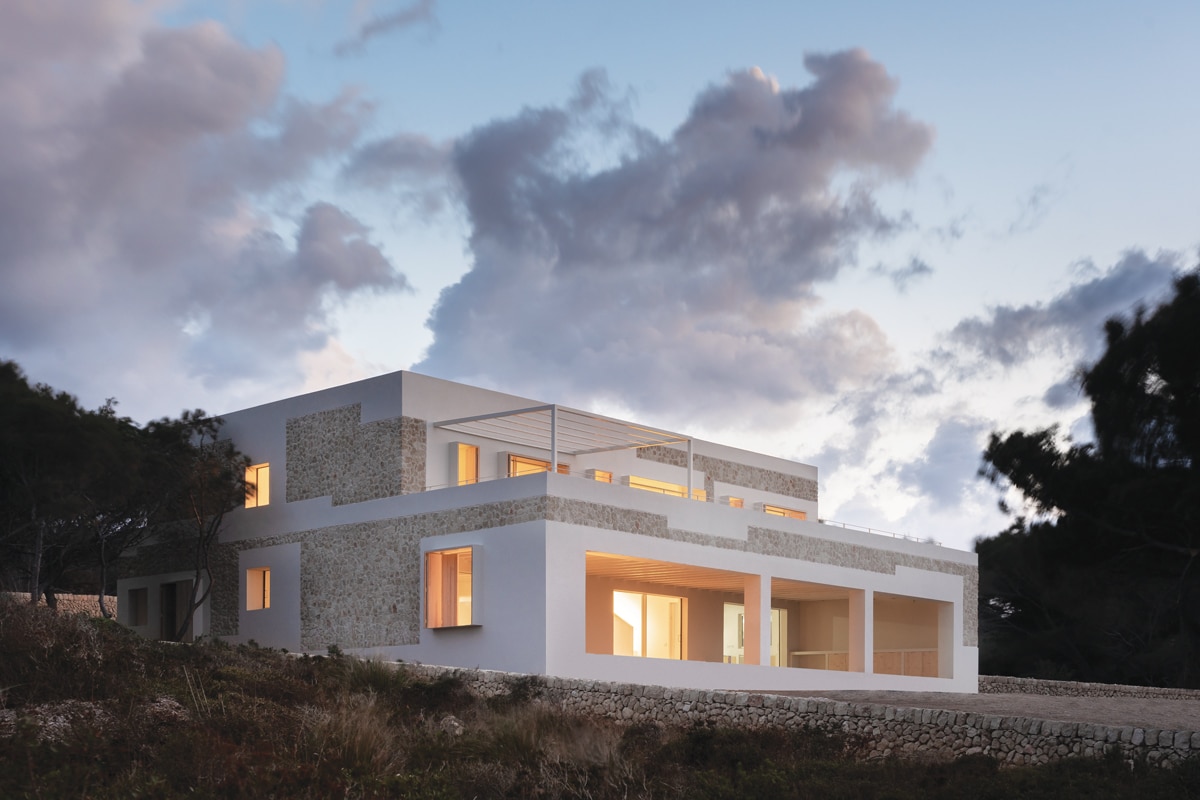
Photo by Joan Guillamat
When a family of six wanted a summer house in Spain that they could entertain guests in, they weren’t joking. The goal? A minimum of 16 beds and a large space where everyone could gather. Barcelona, Spain–based architecture firm NOMO STUDIO delivered.
The completed project has six bedrooms and many other open spaces, all organized around what founding partner and architect Karl Johan Nyqvist calls a “magnificent double height space that connects both physically and visually the two floors.” “Thanks to its large upper floor glazing, this space becomes a very bright light-shaft for the whole house.” Without that glazing, Nyqvist says the house may have lacked light in its core because of its depth. “All the villa’s circulation spirals around this void, liberating it from narrow dark corridors and activating its heart.”
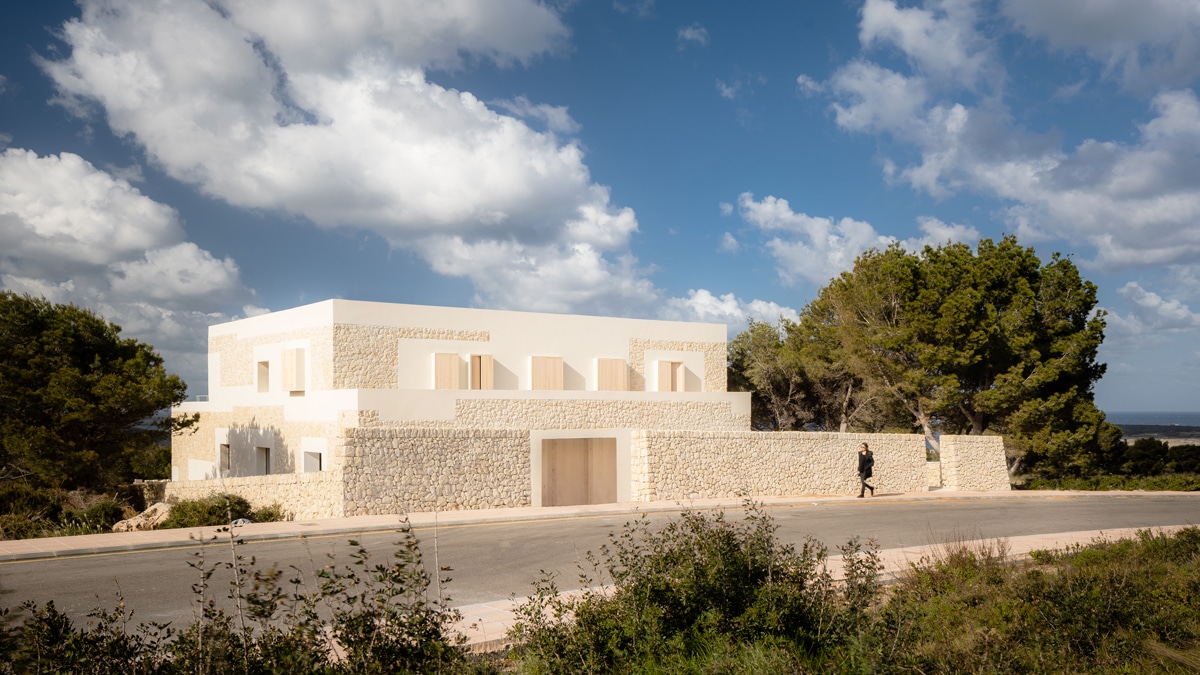
Photo by Joan Guillamat
But Nyqvist says the project’s biggest challenge wasn’t the light, but rather the client’s wish to strongly reflect local traditional architecture without feeling like a replica. To solve that, NOMO STUDIO designed a facade that reinterprets the Minorcan custom of framing windows and edges with white plaster, creating a geometric patchwork of off-white plaster and light stone. Thin steel frames project beyond the solid facade to protect the windows from the direct sun and support the foldable wooden shutters. To emphasize the thick/thin contrast, windows were aligned to the interior and frames embedded from the outside to create the illusion of open holes on a stone wall. “This game of referring to local architecture but executed in a modern way creates an interesting house that can bridge the old and the new,” Nyqvist says.
The project is incredibly sustainable, too, thanks in large part to the facade’s thickness, the insulation, and the windows. The large porch works as a winter garden and helps to create shadows in the summer and a buffer zone in the winter. All windows have wooden shutters to control the sunlight. The house also has an air source heat pump.
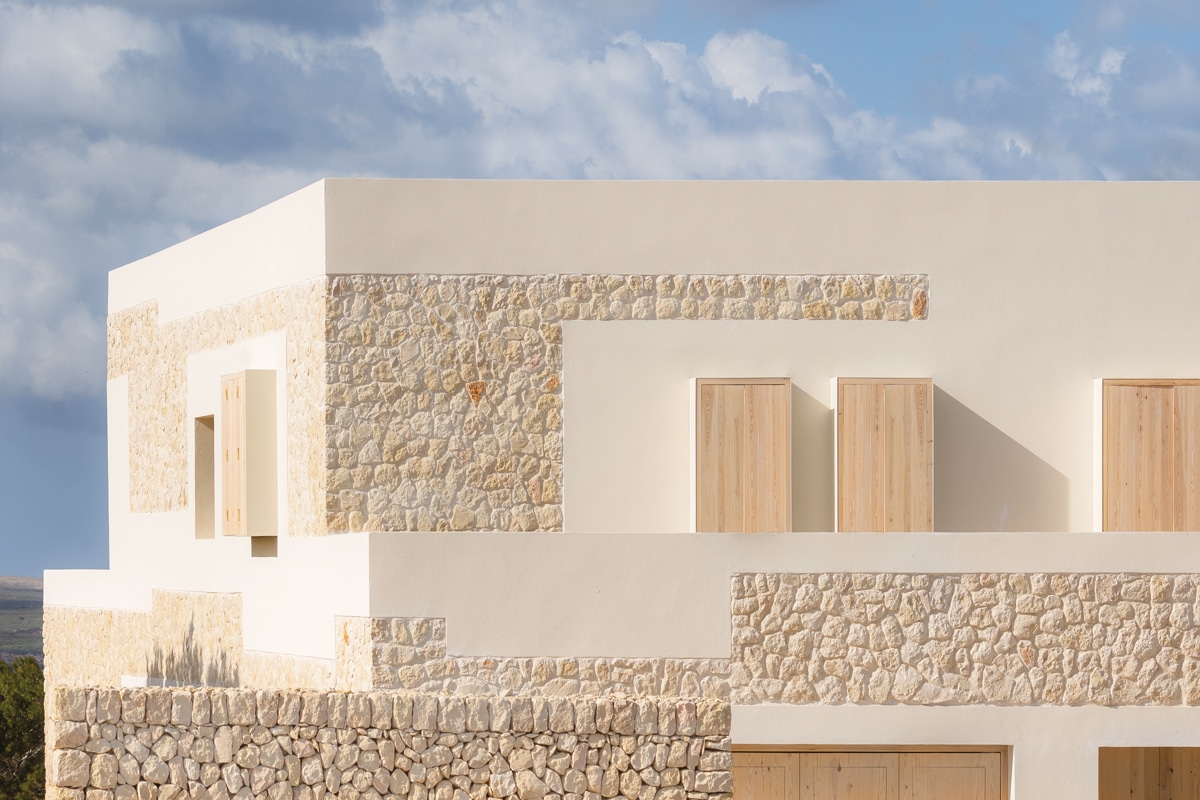
Photo by Joan Guillamat
This family summer house is built using the same technique and material as the ancient limestone walls enclosing most of the farmlands on the island of Minorca where it’s located. Its sequence of superimposed stone layers blend architecture and landscape. “We really like how the walls of the plot merge into the facade of the house and how everything blends with nature,” Nyqvist says. The facade’s stone was collected from the onsite excavation for the villa’s foundation.
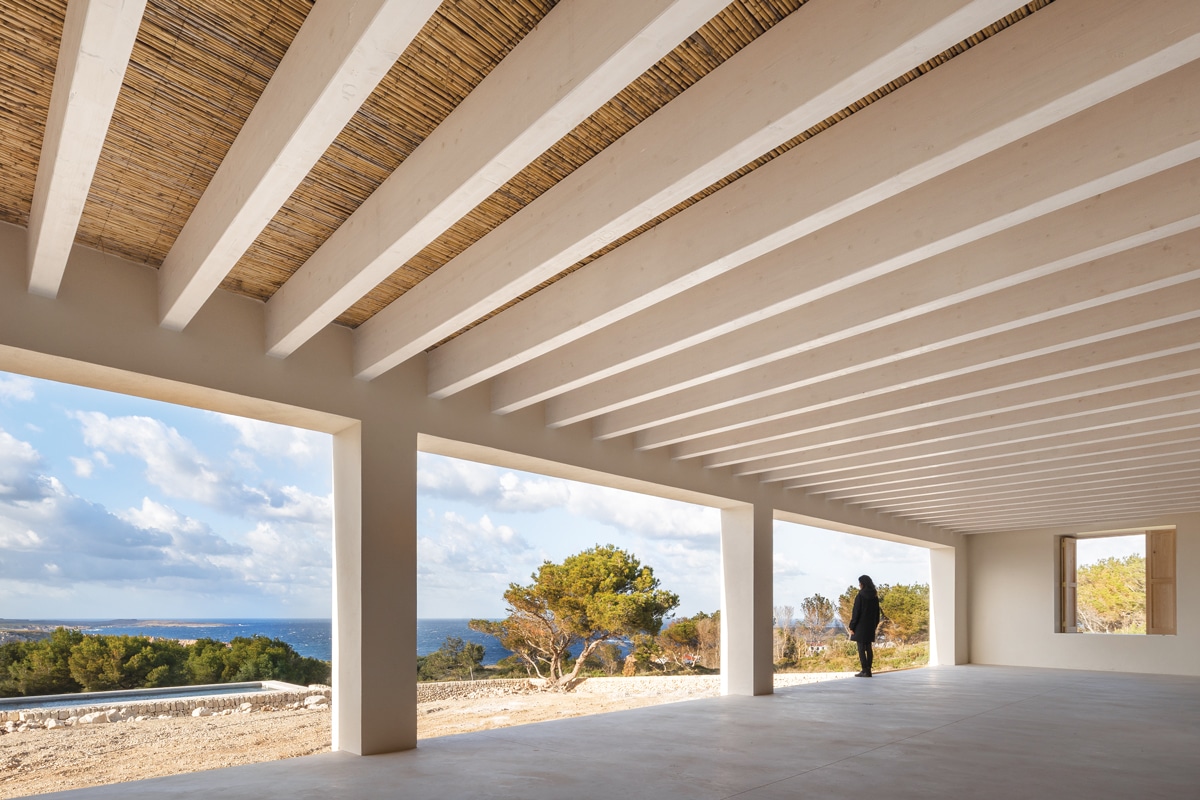
Photo by Joan Guillamat
From its generous covered porch, the homeowners and their guests can take in the the cliffs of Minorca, Spain. The indoor/outdoor space also functions as an extension of the kitchen, dining, and living room, making it a perfect spot to gather on nice evenings. Thanks to the room’s openable double glazed facade, it’s also a true thermal buffer, offering up a shaded porch on hot days and the perfect hot-air insulating system in the winter. In the garden, wild olive trees and local vegetation surround a large limestone platform with a greystone-coated swimming pool.

Photo by Joan Guillamat

Photo by Joan Guillamat
Similar to the exterior, the house’s interior is a combination of continuous sand-colored concrete pavement, whitewashed walls, pine wood carpentry, and white-veiled wooden beams. All built-in kitchen furniture and wardrobes were custom-made by a local carpenter. Details like a solid hovering stair with integrated handrail-lighting create an interesting dialogue between traditional and contemporary architecture.

Photo by Joan Guillamat
North elevation
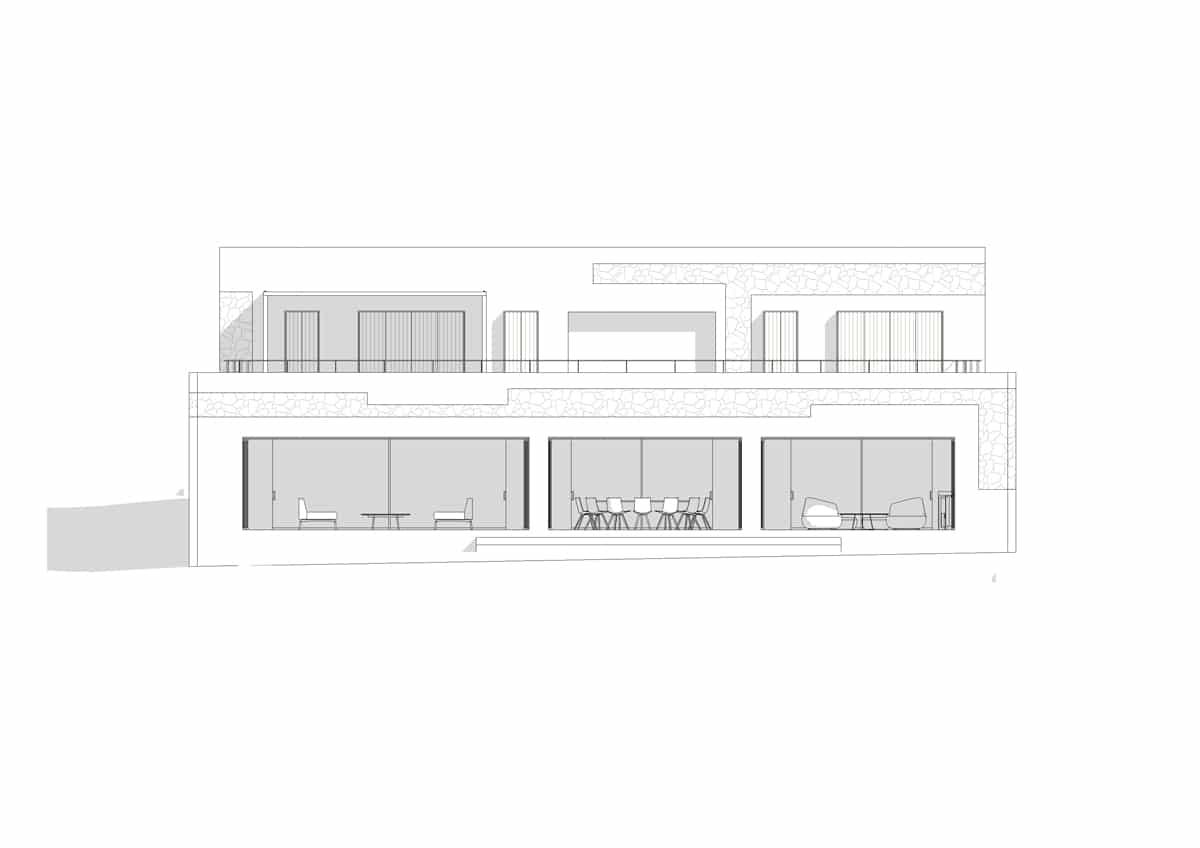
Drawing courtesy of NOMO STUDIO
Project: Stone House Location: Minorca, Spain Completion: 2019 Architect: NOMO STUDIO Building Engineer: Mus&Segui Size: 450 square meters Project Team: Alicia Casals, Karl Johan Nyqvist, Mira Botseva, Jennifer Méndez Landscape Architect: Cristina Gil de Biedma, Bárbara Saavedra
